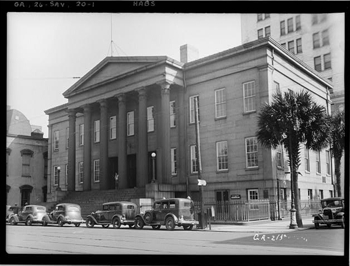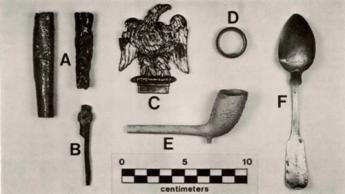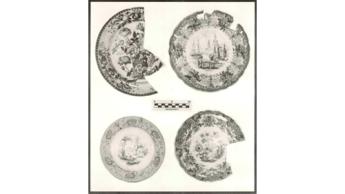Celebrating historic preservation, Savannah, GA

The U.S. Custom House in Savannah, Georgia is the oldest building in GSA’s Region 4 portfolio. Completed in 1852, the building was listed on the National Register of Historic Places in 1974, and is a contributing building to the Savannah National Historic Landmark District.
The building is significant not only for its remarkable Greek Revival architecture, but also for its important role in the southeastern United States’ commerce during the 19th century. The building is located in an area known as Factor’s Walk which was the center of Savannah’s early commercial and shipping district. This location was also the site of the home of the founder of the Colony of Georgia - James Oglethorpe. In addition to its architectural and commercial significance, the famous case of The Wanderer, the penultimate ship to illegally import enslaved Africans, was tried in Savannah’s U.S. Custom House in 1860. The exterior of the building has retained its historic integrity throughout the last nearly 200 years, and is clad in gray granite quarried from Quincy, Massachusetts.
Its stone exterior was intentional, as architect John Norris advocated for fireproof construction due to the City of Savannah’s history of several devastating fires. The original roof design is one of a kind in GSA’s historic building portfolio and Region 4 has been awarded funding through BA64 for repairs and improvement.
The recoating of the existing metal-roof - a unique character-defining feature and improvements to the drainage will reduce water intrusion, and related water damage so that the original interior feature of plaster on wooden lath can be restored.
For the repairs to meet the Secretary of the Interior Standards for the Treatment of Historic Properties, GSA has developed illustrated Technical Guidelines that provide preservation design solutions for GSA’s historic projects including specific guidance on Historic Building Roofing.

In May, Georgia also celebrates Georgia Archaeology Month. GSA has been involved in projects related to the National Historic Preservation Act elsewhere in Savannah’s National Historic Landmark District.
Ahead of the construction of the Juliette Gordon Low Federal Building Complex, archaeologists excavated nearly 220,000 artifacts and documented multiple archaeological features related to domestic life and activities within the district from the 1700s through the early 1900s. Artifacts from this collection, owned by GSA and currently housed at the University of Tennessee - Chattanooga, revealed information that helped define land use patterns over time including site formation processes as they relate to demographic, economic, and social changes in Savannah. This collection is available to researchers who may wish to study Region 4’s vast material culture even further.


As we continue to celebrate National Preservation Month throughout May, please direct any questions regarding our historic portfolio and maintenance to our Regional team:
Danita Brown, Regional Historic Preservation & Fine Arts Officer
Ivy Freitag, Historic Preservation & Fine Arts Specialist
Sarah Love, Historic Preservation & Fine Arts Specialist

 U.S. General Services Administration
U.S. General Services Administration